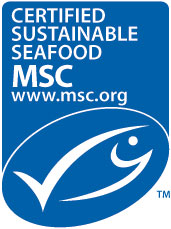Why does fish labelling matter?
For people
- Eating mislabelled fish may mean you are unknowingly being exposed to toxins and allergens.
- If a less expensive type of fish is substituted for the fish you thought you were buying, you may be paying more than you should for your fish – that's fraud!
For the environment
- Fish may not be harvested in a sustainable manner.
- Fish populations, including species at risk, may be negatively impacted
Want to participate?
Learn more about the project and register to participate in our next data collection period.
What did we find out?
Fall 2019
Results
Summary
We learned that of the 70 sequenced fish samples, 5 were in fact mislabelled.
3% (2 samples) were labelled with names that aren’t supposed to be used in Canada based on the Canadian Food Inspection Agency Fish List, while 4% (3 samples) were actually incorrectly labelled fish. These fish were sold under the wrong name either accidentally or on purpose.
That means that overall, 7% of the fish samples had labelling errors of some kind!
Download the in-depth presentation of the results:
Spring 2019
Results
We learned that of the 68 sequenced fish samples, 11 were in fact mislabelled.
4 % (3 samples) were labelled with names that aren’t supposed to be used in Canada based on the Canadian Food Inspection Agency Fish List, while 7 % (5 samples) were actually incorrectly labelled fish. These fish were sold under the wrong name either accidentally or on purpose.
That means that overall, 11% of the fish samples had labelling errors of some kind!
Fall 2018
Results
We learned that of the 54 sequenced fish samples, 8 were in fact mislabelled.
5.5 % (3 samples) were labelled with names that aren’t supposed to be used in Canada based on the Canadian Food Inspection Agency Fish List, while 9.3 % (5 samples) were actually incorrectly labelled fish. These fish were sold under the wrong name either accidentally or on purpose.
That means that overall, approximately 15% of the fish samples had labelling errors of some kind!
Spring 2018
Results
We learned that of the 45 sequenced fish samples, 4 were possibly mislabelled.
9 % (4 samples) were labelled with names that aren’t supposed to be used in Canada based on the Canadian Food Inspection Agency Fish List, while 0 % (0 samples) were incorrectly labelled fish.
That means that overall, approximately 9% of the fish samples had labelling errors of some kind!
Fall 2017
Results
We learned that of the 223 sequenced fish samples, 43 were in fact mislabelled.
38 of the samples were labelled with names that aren’t supposed to be used in Canada based on the Canadian Food Inspection Agency Fish List and 5 samples were actually incorrectly labelled fish. These fish were sold under the wrong name either accidentally or on purpose.
That means that overall approximately 19% of the fish samples collected had labelling errors of some kind.
Spring 2017
Results
We learned that of the 197 sequenced fish samples, 26 were in fact mislabelled.
8 of the samples were labelled with names that aren’t supposed to be used in Canada based on the Canadian Food Inspection Agency Fish List, while 18 samples were actually incorrectly labelled fish. These fish were sold under the wrong name either accidentally or on purpose.
That means that overall approximately 13% of the fish samples collected had labelling errors of some kind.
Fall 2016
Results
We learned that of the 207 sequenced fish samples, 43 were in fact mislabelled.
25 of the samples were labelled with names that aren’t supposed to be used in Canada based on the Canadian Food Inspection Agency Fish List, while 18 samples were actually incorrectly labelled fish. These fish were sold under the wrong name either accidentally or on purpose.
That means that overall approximately 20% of the fish samples collected had labelling errors of some kind.
Participating Classes : Fall 2016 to Spring 2017
Partners
Let’s Talk Science is partnering with the Centre for Biodiversity Genomics at the University of Guelph, Ontario and the Marine Stewardship Council to provide free DNA sample collection kits to senior high school classes across Canada.
Some of the scientists we are working with include:

Bob Hanner
Associate Professor, Biodiversity Institute of Ontario, University of Guelph

Dirk Steinke
Director of Education & Outreach, Biodiversity Institute of Ontario, University of Guelph

